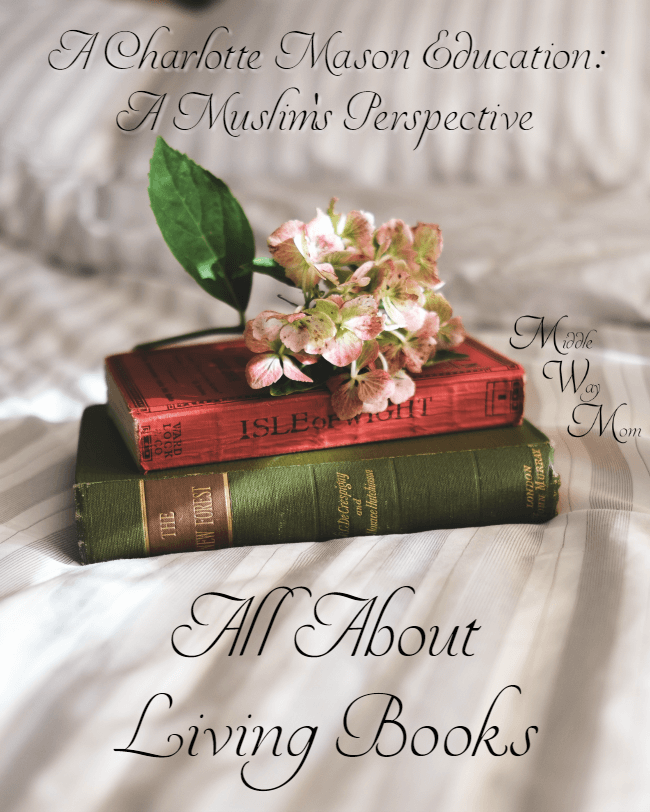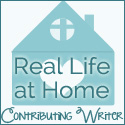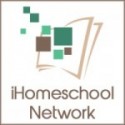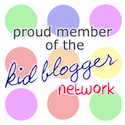This post was written by Dr Gemma Elizabeth from Our Muslim Homeschool
The term “living books” has become synonymous with good quality children’s literature, particularly amongst Charlotte Mason homeschooling circles. Unfortunately literature is often given little importance within Muslim communities and culture.
By choosing to homeschool, we have chosen to become solely responsible for the education of our children. The responsibility to broaden their intellectual horizons, to stir their minds and liven their curiosity, rests upon our shoulders.
This burden is a heavy one, but incorporating living books into your homeschool is a wonderfully easy way to assure these outcomes, whilst discovering other unexpected benefits along the way.
What is a living book?
Charlotte Mason did not give us reading lists or lists of criteria to identify living books. However in her extensive works, she did hint towards the kind of books we should be introducing to our children.
“Our business is to give him mind-stuff, and both quality and quantity are essential.
Naturally, each of us possesses this mind-stuff only in limited measure, but we
know where to procure it; for the best thought the world possesses is stored in
books; we must open books to children, the best books; our own concern is
abundant provision and orderly serving.”Charlotte Mason, A Philosophy of Education, p.256
Living books, or real books as they are sometimes referred, are written by one author who is passionate and often an expert in the topic of the book. The author is so familiar with the subject of the book, that it is weaved effortlessly throughout the story. An example of this is “The Secret Garden” by Frances Hodgson Burnett. Although the book is not meant to “teach” in the traditional sense, reading this book will acquaint your child with the beauty of the Yorkshire moors, the identification British wildlife and fauna, and understanding of Victorian England, in a way no textbook ever could!
Living Books v.s. Textbooks
Education is not the acquisition of information, but the acquisition of ideas. Charlotte Mason encouraged parents to put their children into contact with the minds of thinkers.
“Education is mind to mind, thought to thought, person to person.”
Karen Andreola, The Charlotte Mason Companion
By reading living books to our children, we are putting them in contact with the minds of thinkers. The enthusiasm and passion of the author comes through in their writing, and it is the author’s emotions that impact upon the child.
Living books, although written with accuracy, are also written in a “playful” way. They present the children with ideas and liven their curiosity!
Unlike the typical “school-book”, which tend to be books of facts, living books are written in a narrative form, i.e. in the form of a story.
These well-written stories are steeped in noble thought, rich vocabulary, and memorable characters. Unlike the bland and superficial knowledge presented in textbooks, real books provide a deeper and more substantial understanding of the topic.
Living books encourage noble and good character, as well as a dislike for that which is not.
The Prophet (s.a.w.) is reported to have said,
“The one who guides to something good has a reward similar to that of its doer.” [Muslim]
Living books are a way for parents to “guide to something good”, and warn against that which is evil.
The emotions of the story stir the mind to form memories and create a deeper connection with the material being covered. Then, when the child tells it back in their own way (i.e. narration) that story becomes their own.
As I mentioned in part 1 of this series, the Charlotte Mason philosophy of education is built upon the understanding that “Children are born persons,” i.e. they are as human as an adult!
It is this “human” element that makes living books so effective. Textbooks and reference books can be used in a child’s education, but secondarily to living books.
For example, reading one of the beautiful stories from the Burgess Bird Book may spark an interest in a particular bird. To continue their learning, you could then have your children refer to a spotter’s guide or reference book about birds, to learn more.
How do I recognize a Living Book?
As I mentioned a living book is usually:
- Written by one author, passionate about the subject matter
- Written in a story form
- Contains noble thought, i.e. encourages to good
- Well-written
When I first began to research the works of Charlotte Mason, I found the book-lists in the book “Honey of a Child’s Heart” by Gladys Hunt, to be really useful. Also, the Book finder on the Simply Charlotte Mason website is a great resource to find living books for almost every subject in your homeschool.
However, the best test of a living book, is what Karen Andreola refers to as the “One Page Test.” If you’re not sure if a book is a living book, and will capture the imagination of your child, read to him from it and stop after one page. If he turns to you can says, “Read more!” then you know that it is a living book!
A little advice
If you are not accustomed to using living books with your children, or perhaps never even read many as a child yourself, please start slowly. It will take time for kids to adjust to the new style of writing, but persevere with patience.
Although it may be tempting, in your enthusiasm to embrace Charlotte Mason’s teaching, to purge your shelves of all “less than worthy” books (a.k.a.twaddle), I would not advise this immediately.
Instead, try to apply the criteria I mentioned above as you shop for any new additions to your child’s library. Similarly, do not buy every living book you find, with little thought to how it will be used in your homeschool. Remember, a few well-chosen books that are read often, are worth far more to your child, than shelves and shelves of great literature that is never read.
Living books will create a depth and richness to your child’s education that cannot be matched by any other method. As you read, you create an atmosphere of learning in your home; an atmosphere that glorifies the good and that upholds the noble. The beautiful words found in living books will help you to create a beautiful education for your children.
Do you have a favourite living book that your family have enjoyed?
How do you use living books in your home?
Let’s chat about it in the comments below!
If you haven’t already, you can read Part 1 and Part 2 of this series by clicking on the links below!
Charlotte Mason Education: A Muslim’s Perspective – Part 1 (The Nature of a Child)
Charlotte Mason Education: A Muslim’s Perspective – Part 2 (Atmosphere)
Peace and Love,
Dr Gemma Elizabeth
Author Bio:
Dr Gemma Elizabeth is a homeschooling mother of three from the U.K. As a passionate advocate for home education, she writes widely on the subject for various publications and speaks to mothers across the country about the benefits of homeschooling. In between the science experiments, read-alouds and math drills, she finds time to film videos for Youtube and writes on her blog OurMuslimHomeschool.com.





Jzk khayr. I have thoroughly enjoyed reading your articles on Charlotte Mason. I would appreciate if you could give us examples of living books you use with your children.
Thanks again.
Assalam alykum Fatima,
I’ll chime in and in sha Allah Gemma will give you some insight into what she uses as well.
For nature study, the Burgess Books, like The Burgess Bird Book, are well regarded.
For history I’ve used the Beautiful Feet Books website as a jumping point for finding good quality books.
For science, while it isn’t a story book, the Building Foundations of Scientific Understanding are well liked because it is written by one author who is passionate about the subject, and the content is delivered through asking questions with your child, demonstrations, and experiments.
For geography, I have my eye on the Hollings books like Paddle to the Sea and Minn to the Mississippit. Charlotte Mason herself wrote a geography book as well, though it is UK-centered so there are some aspects that my children don’t relate to.
For math there are some books that are aimed at CM homeschoolers. Personally, we use Right Start Math and find that it is in line with the CM math instruction since it is very hands-on, as long as I keep the lessons short.
One thing that keeps me centered on finding good books is whether *I* want to read them, too. Am I interested, or do I find myself skipping over lines because I’m trying to find the point?
In sha Allah that helps! You can find some good Charlotte Mason groups on Facebook that can help you navigate through the various options as well.
Salaam Sr. Fatima. I love everything that Shannen has mentioned above.
An example of a living book for history might be “Our Island Story” by H.E.Marshall, or “Leif the Lucky” by Ingri dAulaire.
For Geography we use books like “If you lived here – Houses of the world”, “Children Just like me” and “Home Geography for Primary Grades” by C.C.Long.
For character study/Islamic studies I would recommend the books of Seerah by Leila Azzam.
For science we are currently using, “A seed is sleepy” by Dianna Hutts Aston and “Gregor Mendel” by Cheryl Bardoe.
Once you start looking, you will see that there are so many beautiful books out there…more than you could ever read! It is such a pleasure when you find one and read them with your children! It really is!
If you are looking for further examples, I would also recommend joining one of the many Facebook groups for Charlotte Mason homeschoolers.